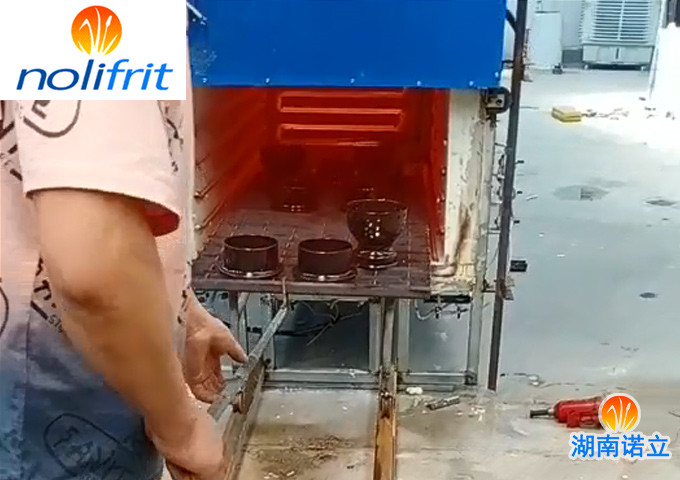The Control of Firing Temperature in Firing Proces
To ensure the quality of the enamel products produced by the enamel factory, it must strictly follow the various firing technical parameters and operating points. It is produced in strict accordance with a reasonable process. The main contents of the firing process include firing temperature, firing time, firing atmosphere and cooling method, etc. Here we will talk about firing temperature.

The firing temperature is the temperature at which the performance of the enamel product reaches the best value. It is the primary condition to ensure the internal and external quality of enamel products in the firing process. The firing temperature of various enamel products is different, mainly depending on the type and performance of the enamel frit used. The firing temperature can only be determined by the type of enamel. Choose within the specified temperature range.
Internationally, the firing temperature range of general enamel frit is mostly around 800℃ or lower. In China, aluminum enamel is around 580℃; cast iron enamel and steel enamel matt frit is below 800℃; ordinary steel plate enamel The ground coat is at 760~860°C, of which low-temperature ground coat is mostly used for black bright primary enamel products; titanium enamel is at 800~840°C; antimony enamel is at 840~860°C; glass-lined enamel is at 900~950°C. The product is selected according to the purpose and the material of the body, which basically determines the firing temperature range of the product produced by the enamel factory.
If the furnace temperature is too high during the firing of the enamel product, the heating rate of the powder body is too fast, it will cause the maladies of external boiling and even external coke internal growth, and will also lead to incomplete physical and chemical reactions, poor adhesion, and coldness of the enamel frit. Pores appear in the enamel layer and the enamel layer, which affects the physical and chemical properties of the enamel product, such as acid resistance and gloss.
If the furnace temperature is too low during firing, the internal and external room temperature difference of the enamel product will be reduced, but the final surface melt viscosity of the enamel layer will be relatively large, and the bubbles in the enamel layer will not easily escape. The deposition rate and the dissolution and diffusion of FeO are slow. There will be defects such as poor adhesion, explosion points, black lines, and screen bubbles. At the same time, because the powder layer cannot be completely melted, the porcelain surface is rough, and the gloss, rapid temperature change and chemical stability are relatively poor.
Therefore, the enamel factory strictly controls the firing temperature in accordance with a reasonable production process during production, which plays an important role in ensuring the quality of enamel products.